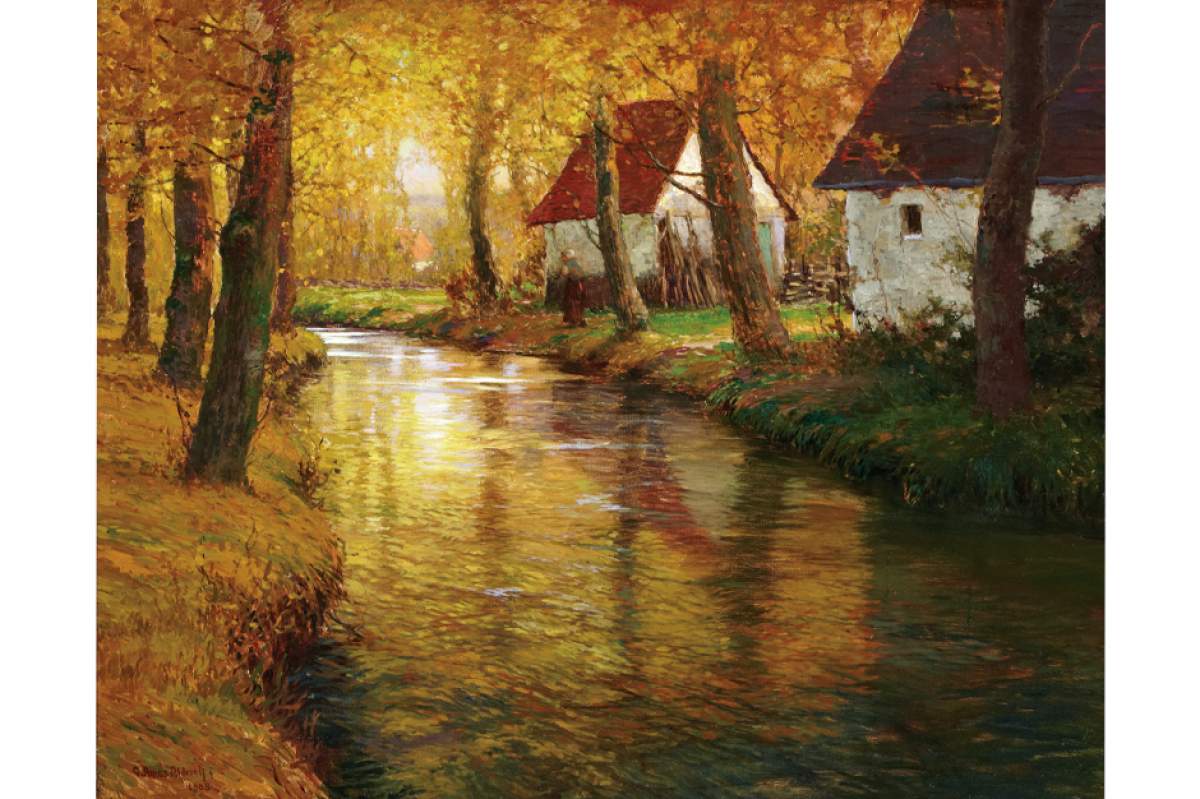
South Bend artist George Ames Aldrich (1871-1941) was once one of Indiana's best known landscape painters, and is still one of that city's favorite sons.
Last year Aldrich's reputation got a boost when the Brauer Museum of Art at Valparaiso University mounted the first exhibition of his work since his lifetime.
Now, a new coffee table book published in conjunction with the exhibition shows that Aldrich was both a master of idealized rustic scenes as well as a fanciful self-promoter.
The Art of George Ames Aldrich contains fifty reproductions of Aldrich's oil paintings and essays by independent art historian Wendy Greenhouse. Brauer Museum director/curator Gregg Hertzlieb and independent fine art consultant Michael Wright contributed to the book.
WFIU's Adam Schwartz spoke with Greenhouse, who says that Aldrich's idealized rustic scenes were exactly what most Americans wanted hanging on their walls. She calls his style "decorative impressionism."
"It's painted in a style we might call 'impressionist,' with broken brushwork and very pretty colors," she says. "The kind of thing that appealed to most people for whom abstraction and real modernism was really hard to digest and accept as art. This is what people recognized as art in that era.
"He pleased a lot of people with it, and people still love his work. They find it very accessible, very relaxing, pleasing. It's the kind of art that takes you away from your daily cares. It takes you out of the city into a past place that's very remote, idealized, fictionalized-it's the art of escape to a great extent.
Adam Schwartz: In writing a book what new information did you uncover about George Ames Aldrich?
Wendy Greenhouse: Just about everything. Seriously. I went back to all the standard sources and almost none of it held up. [Aldrich] claims to have spent thirty years in Europe, which was entirely untrue. He was in and out of Europe for about a six-year period.
In Indiana, in a place like South Bend or Sioux Falls, he would arrive as this European-trained professional artist and everybody would be dazzled by his high international stature, which was completely something he created for them.
AS: Did he not really have an international stature?
WG: Not at all. He claimed to be an internationally-exhibited and collected artist and I found no evidence that he ever exhibited in Europe or that any of his works stayed in Europe.
AS: Was he something of a poseur?
WG: Absolutely. His life was a tissue of fictions from one end to the other. Which made [writing the book] both very challenging and a lot of fun to research.
AS: What was the public's reaction to last year's Adrich show at the Brauer Museum of Art?
WG: I think it was very popular. [Aldrich] is very well known and beloved in Indiana. He's thought of as an Indiana painter and his work has wide appeal. Even today the average person who goes to a museum likes to see art that they can relate to, as art. That's representional, that's pictorial, and that's beautiful.
And he did have an amazing facility for painting flowing water, which was one of the things he wanted to be known for. His work is just compelling and beautiful because it provides this beautiful escape.
What was special about the Brauer show, that showed Aldrich in a new way, was that it incorporated some of his less-common subjects. And particularly the industrial subjects, which I think we're finding a lot more interesting today.
He painted factories on the banks of the river around South Bend. He painted scenes of the steel mills near Chicago at night, very dramatic, with fire lighting up the sky.
AS: So it's possible that the show at the Brauer and the publication of this book might rehabilitate Aldrich's reputation in the public's eye.
WG: I think so. Just the fact that there's a publication about an artist establishes a certain importance for them. And I also hope that because of that, people who don't know Aldrich's work will discover him. And people who think they know what Aldrich did will discover that he had a lot of other sides to his painting, a lot of other subjects, and really appreciate the variety he was capable of.
Read a commentary on Aldrich by Gregg Hertzlieb here.






